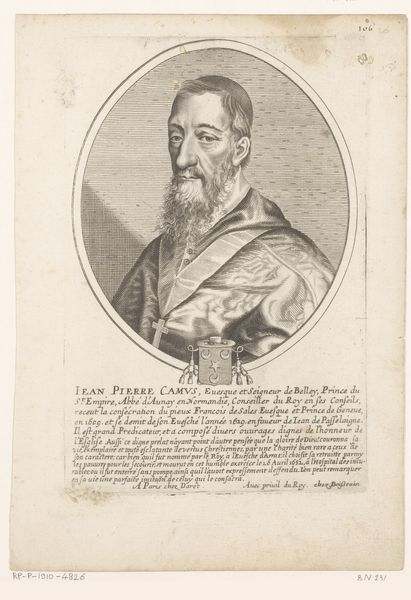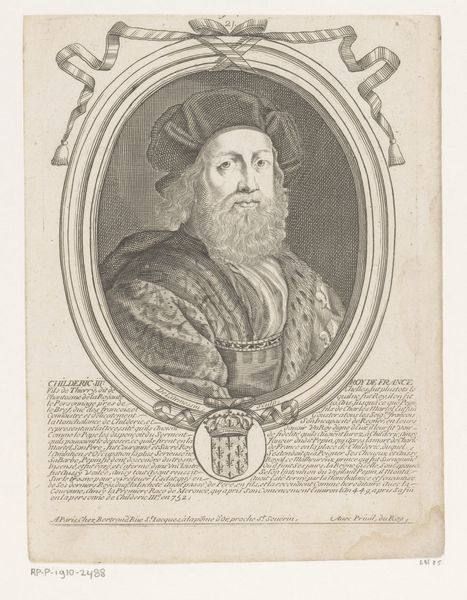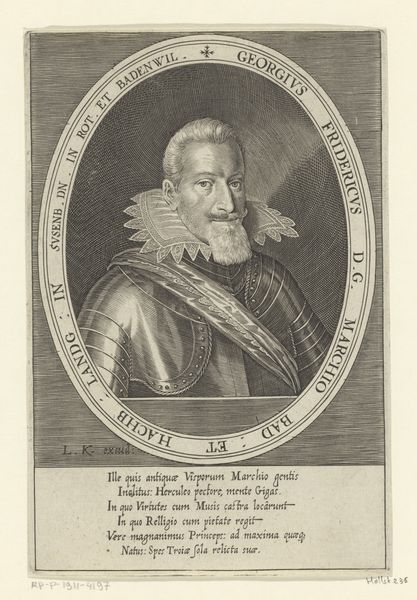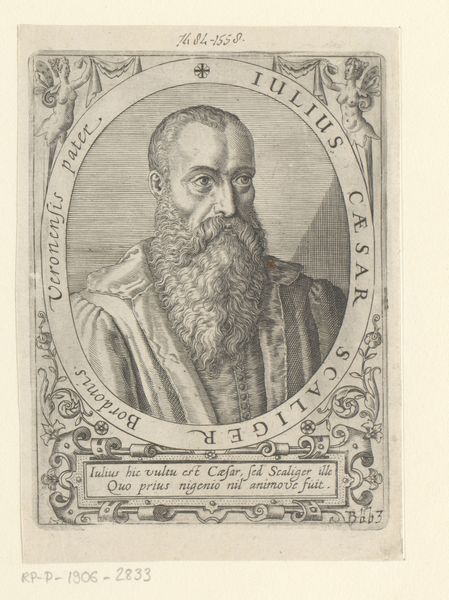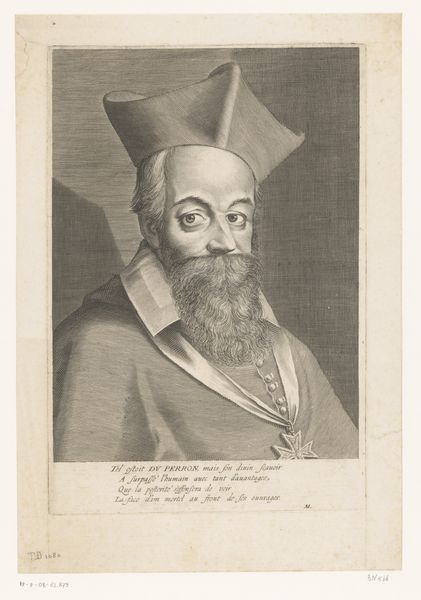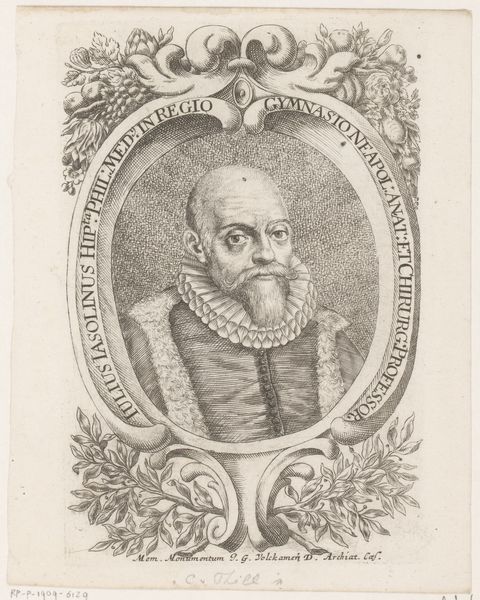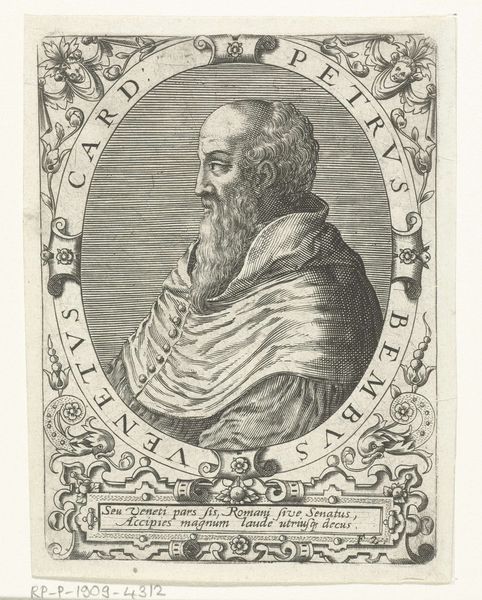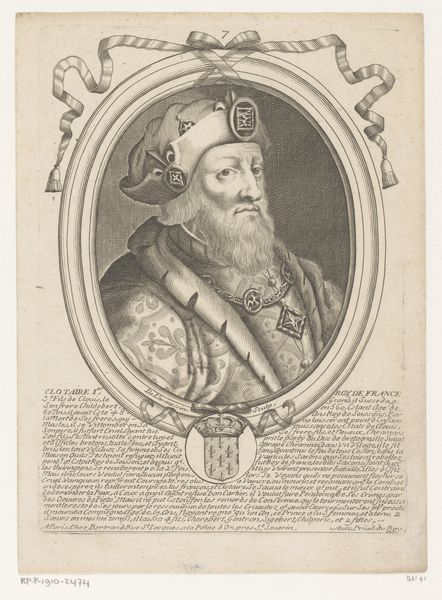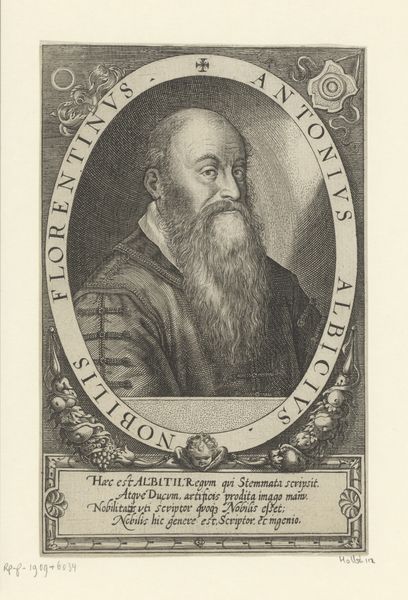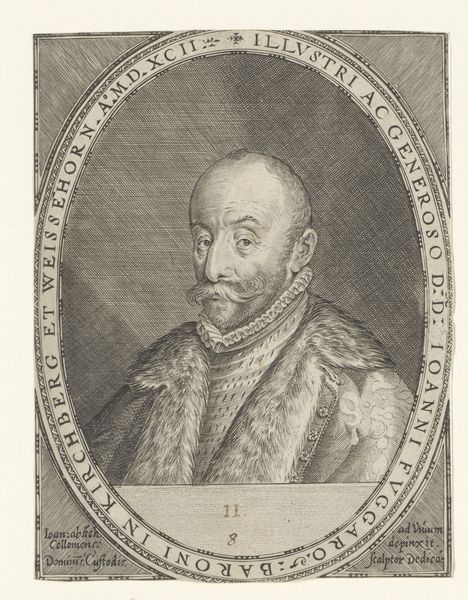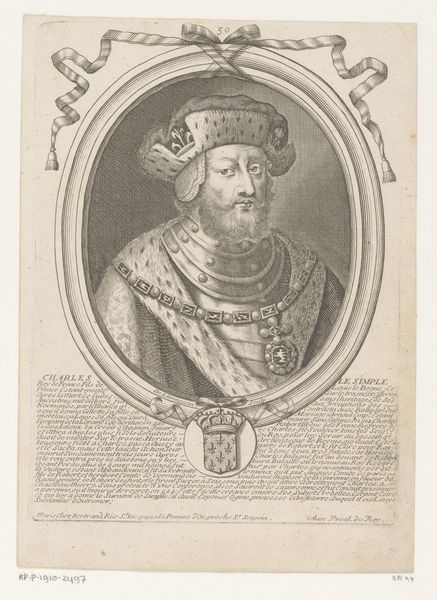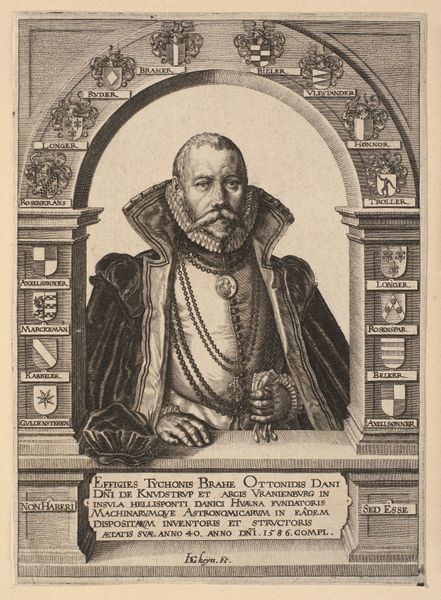
print, engraving
#
portrait
#
baroque
# print
#
history-painting
#
engraving
Dimensions: height 193 mm, width 131 mm
Copyright: Rijks Museum: Open Domain
Editor: So this is "Portret van Jacques Davy du Perron," a baroque-style engraving from between 1633 and 1676, by Jean Frosne. The subject seems imposing, serious. What strikes you when you look at it? Curator: I’m immediately drawn to the oval frame and the elaborate text below. This isn't just a portrait; it's an iconographic statement. The frame almost canonizes the sitter, placing him within a symbolic lineage. The text becomes part of the visual language, doesn’t it? It tells us who he was, what his status was. Editor: Yes, I see what you mean. The text isn't just a caption; it's elevating him! And he does seem like a man of importance with his beard and cross. Curator: Exactly! Look at the heraldic shield below the portrait, too. It's not merely decorative. What do heraldic symbols usually represent? Editor: Family, lineage…power? Curator: Precisely. This shield, coupled with his religious attire and that commanding gaze, projects a sense of established authority. Think about how such imagery functions within cultural memory. This print wasn’t just meant to be admired; it was meant to *remind* viewers of something – of what, perhaps? Editor: His enduring influence? A kind of visual propaganda, even? Curator: Indeed. An assertion of power encoded in symbolic language. The baroque period loved to blend realism with these overt symbols. Are you interested in seeing any other baroque images for comparison? Editor: Yes, that’s very insightful. It's like reading a person through the symbols attached to them. Thanks! Curator: My pleasure. These visual echoes are powerful reminders of our shared, and often contested, cultural heritage.
Comments
No comments
Be the first to comment and join the conversation on the ultimate creative platform.
